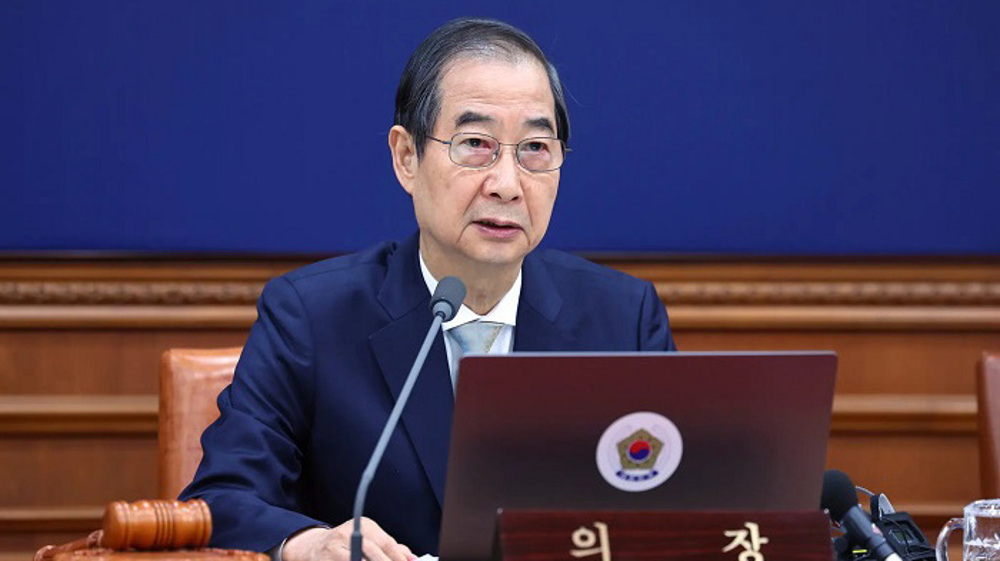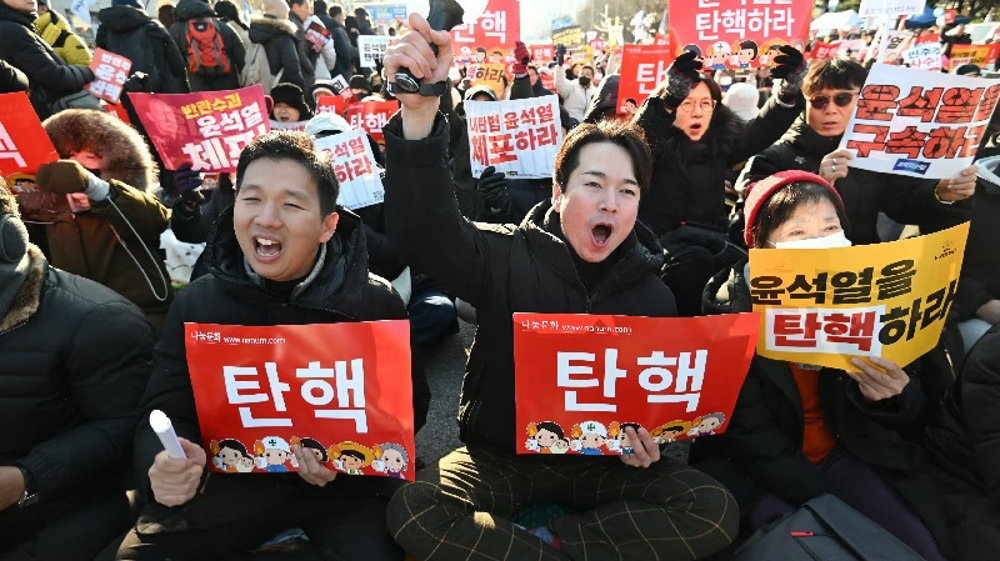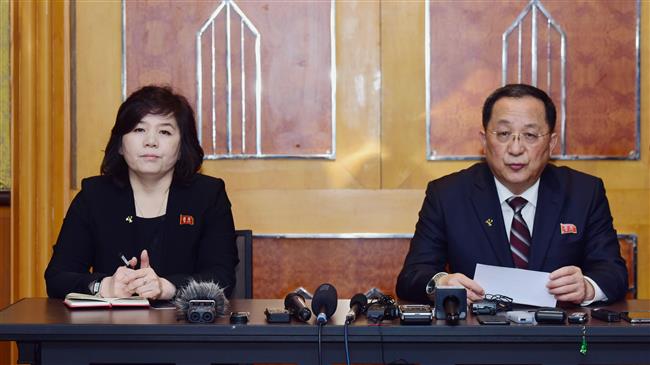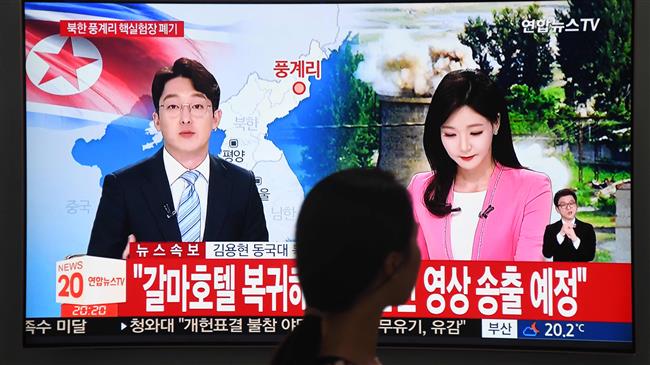South Korea claims North Korea restoring part of destroyed ballistic missile site
South Korea alleges that North Korea is restoring a ballistic missile launch facility it had torn down as an initial step toward denuclearization of the Korean Peninsula, less than a week after US President Donald Trump cut short his second summit with North Korean leader Kim Jong-un without sealing a deal.
South Korea's Yonhap news agency cited on Tuesday a report by the country’s National Intelligence Service (NIS) as saying that North Korea “appears to be putting back a roof and a door (to a Dongchang-ri facility).”
The site, located in North Pyongan Province, is said to be served as the engine test site and missile launch facility for liquid-fueled intercontinental ballistic missiles (ICBM).
Last year, Pyongyang announced that the site, which is known by at least two other names, Tongchang-ri and Sohae, had been fully destructed.
The NIS, which announced the unexpected news during a briefing to the National Assembly's intelligence committee, further said “the US information is the same as ours.”
The report by the South’s spy agency confirmed, however, that late last year Pyongyang halted the operation of its 5-megawatt reactor at its mainstay nuclear complex in Yongbyon, north of Pyongyang, “with no signs of reprocessing activities there.”
It also said the underground tunnels of North Korea’s nuclear test site in Punggye-ri had remained shut and unattended since Pyongyang destructed them in May last year.
Trump and Kim met at a historic summit for the first time in June 2018 in Singapore, where they agreed to work toward denuclearization of the Korean Peninsula. Subsequent diplomacy between the two sides, however, made little progress, mainly because the US refused to lift its crippling sanctions.
So far, Pyongyang has taken several steps toward the goal by suspending missile and nuclear testing, demolishing at least one nuclear test site, and agreeing to allow international inspectors into a missile engine test facility.
The US, however, has insisted that sanctions on the North must remain in place until it completely and irreversibly dismantles its nuclear program.
The second summit between the two leaders was held in the Vietnamese capital, Hanoi, on February 28 with hopes of reaching an agreement on denuclearization of the Korean Peninsula and removing the harsh US sanctions but Trump abruptly walked away from the talks and held a press conference shortly afterward.
During the presser, a downbeat Trump told reporters that “he had to walk away” from the talks because of North Korea's demands to lift all economic sanctions against Pyongyang as a prerequisite to denuclearization.
However, a few hours later, North Korean Foreign Minister Ri Yong-ho offered a completely different breakdown of the summit, telling reporters in a separate presser that Pyongyang never asked for the removal of all sanctions, but only the partial removal of them.
On Monday, US Secretary of State Mike Pompeo said he was hopeful about dispatching a team to North Korea in the coming weeks to resume negotiations on the North’s nuclear weapons program.
“In spite of lots of hard work that was done by (the) State Department team, (Department of Defense) team, all the folks at the Department of Energy over the past weeks working with the North Koreans to try and outline what a real big deal would look like, we didn't get there,” the US top diplomat said.
Pompeo also noted that the US would continue to work to make progress on eliminating the purported nuclear threat, both bilaterally and with partners around the world.
“So I am hopeful, although I have no commitment yet, that we will be back at it, that I'll have a team in Pyongyang in the next couple weeks continuing to work to find those places where there is shared interest,” he added.
The collapse of the summit also disappointed US-ally South Korea, which has been improving relations with the North since Kim and South Korea’s President Moon Jae-in met in January 2018.
Israeli aggression against Gaza hospitals ‘flagrant violation’
More pro-Gaza rallies held across Yemen
'Hunger is everywhere in Gaza': UN food agency
Iran dismisses Arab League accusations, says wants stability in Syria
Syria's HTS militants seek ‘peace’ with Israel
VIDEO | Israel violations of ceasefire
Hamas: Israel’s raid on Kamal Adwan Hospital ‘war crime’
VIDEO | TELECOM 2024 brings together ICT firms in Iran
















 This makes it easy to access the Press TV website
This makes it easy to access the Press TV website